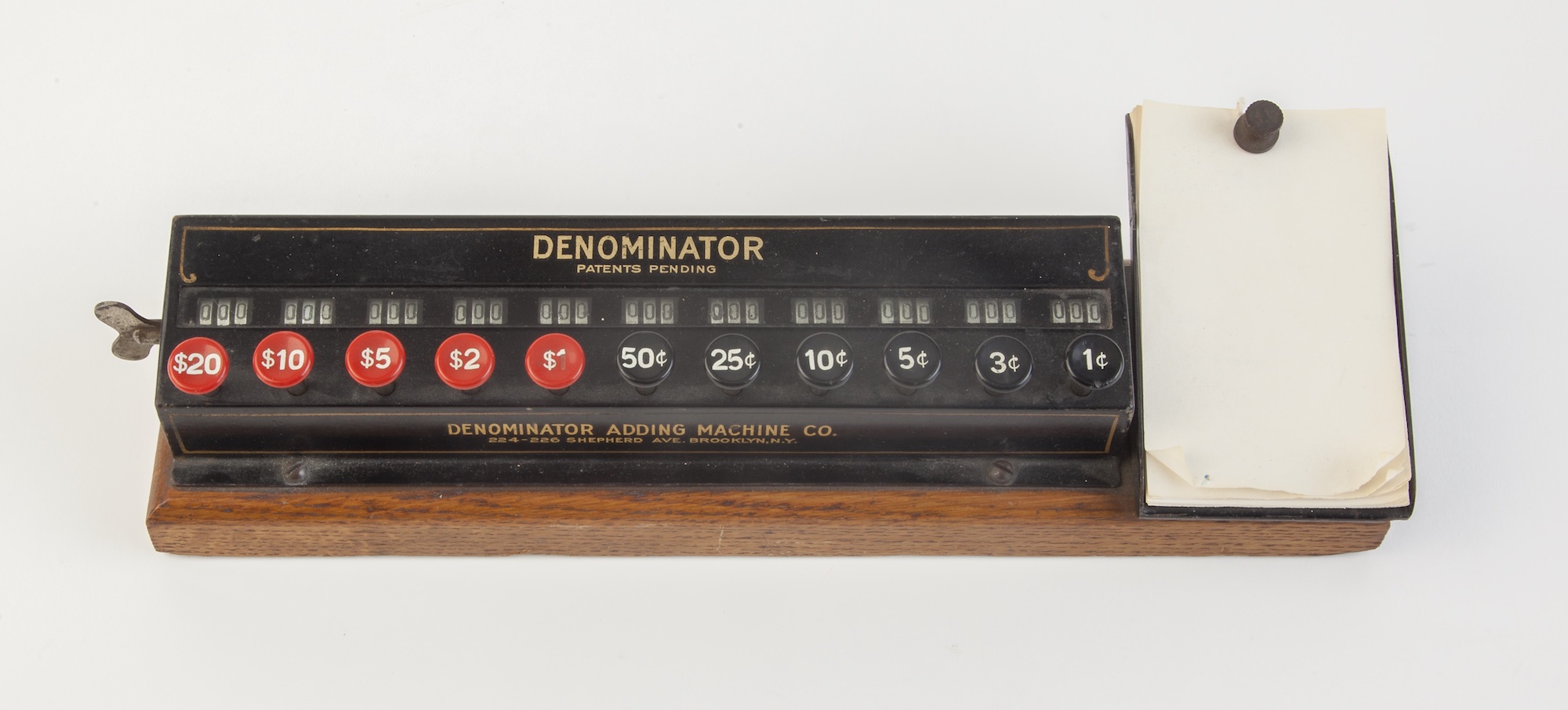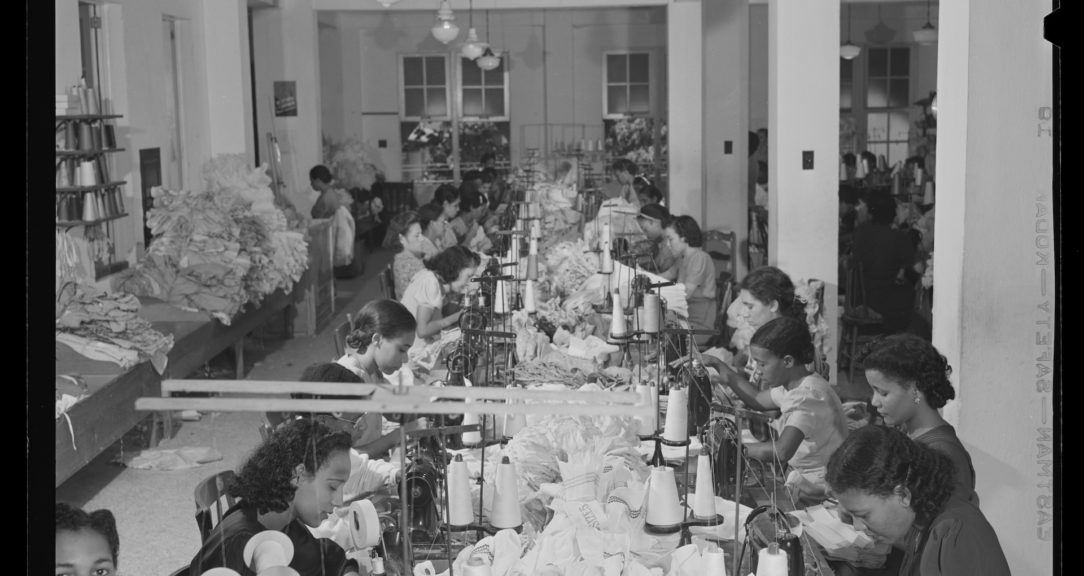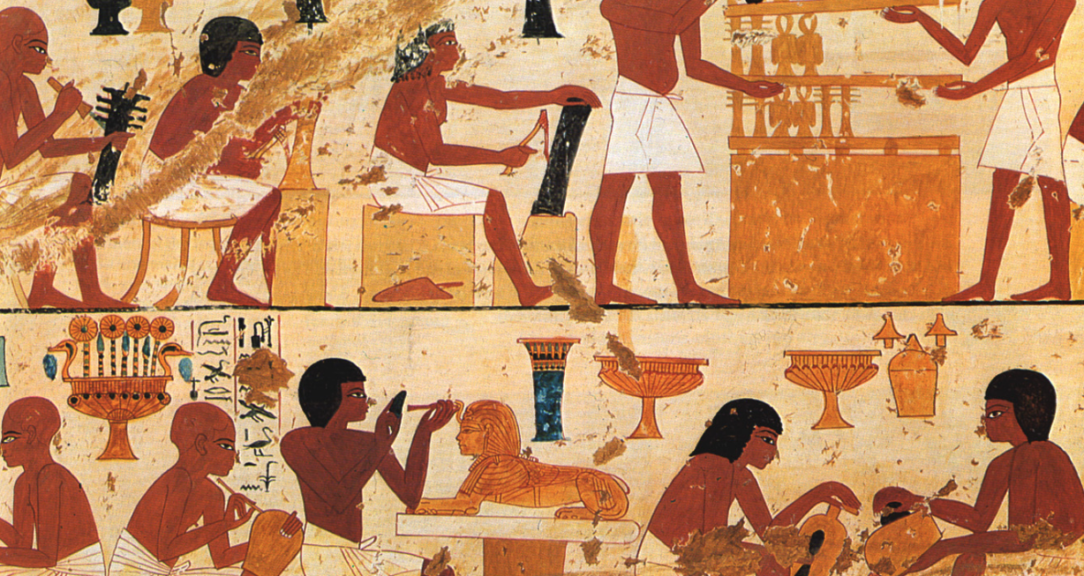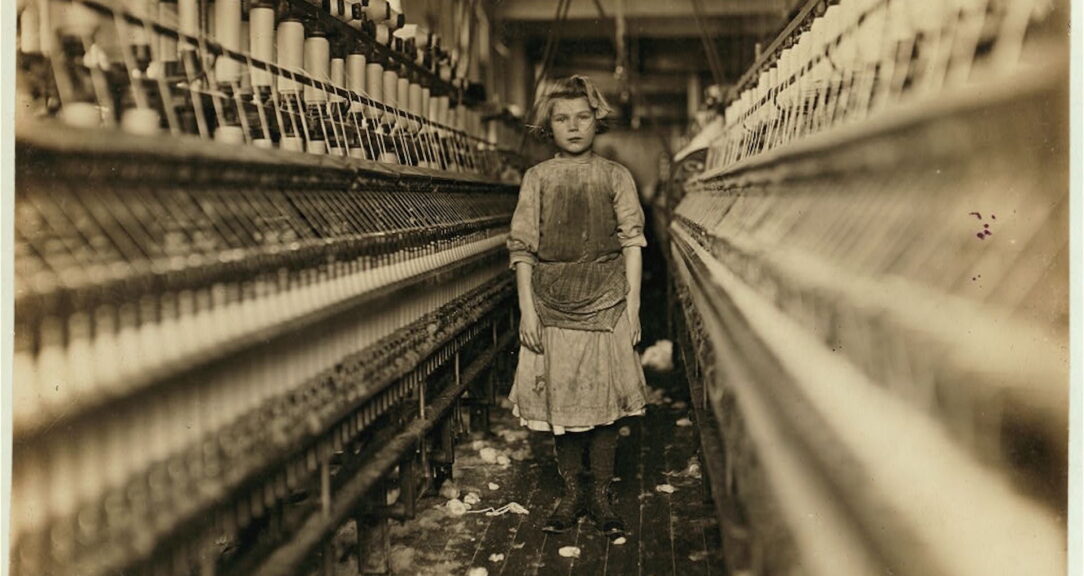Back when employers paid workers exclusively in cash, it was hard to know the correct combination of notes and coins needed to meet payroll. Determining the exact combination was time consuming and tedious — but the introduction of the Denominator changed the game for U.S. payroll clerks in the early 20th century.
Designed by William A. Cook and Joseph Levine in 1915, the Denominator counting machine began to be produced by the Denominator Adding Machine Company in New York in the early 1920s. The patent, granted in 1923, describes “an apparatus for the use of paymasters for denominating currency for payrolls, or for other purposes, […] the device will be cheap to construct, easy to assemble, will not easily get out of order, and which will be easy to repair.” The machine cost $45 when it was first invented in 1915 — equivalent to more than $1,300 in today’s dollars.
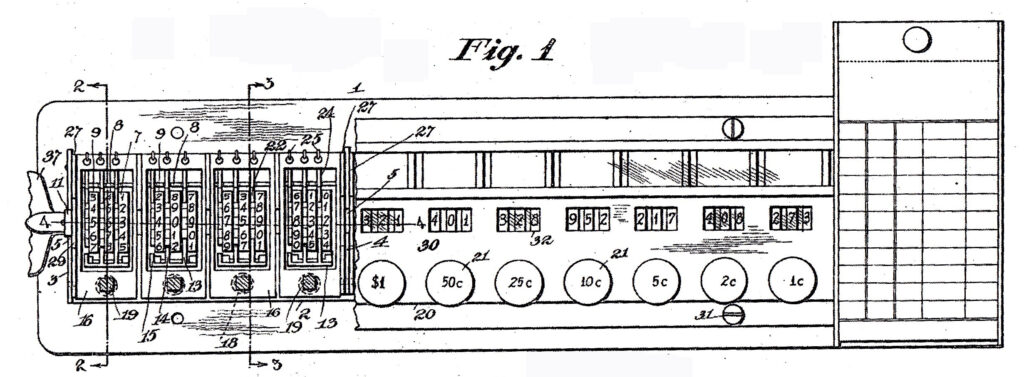
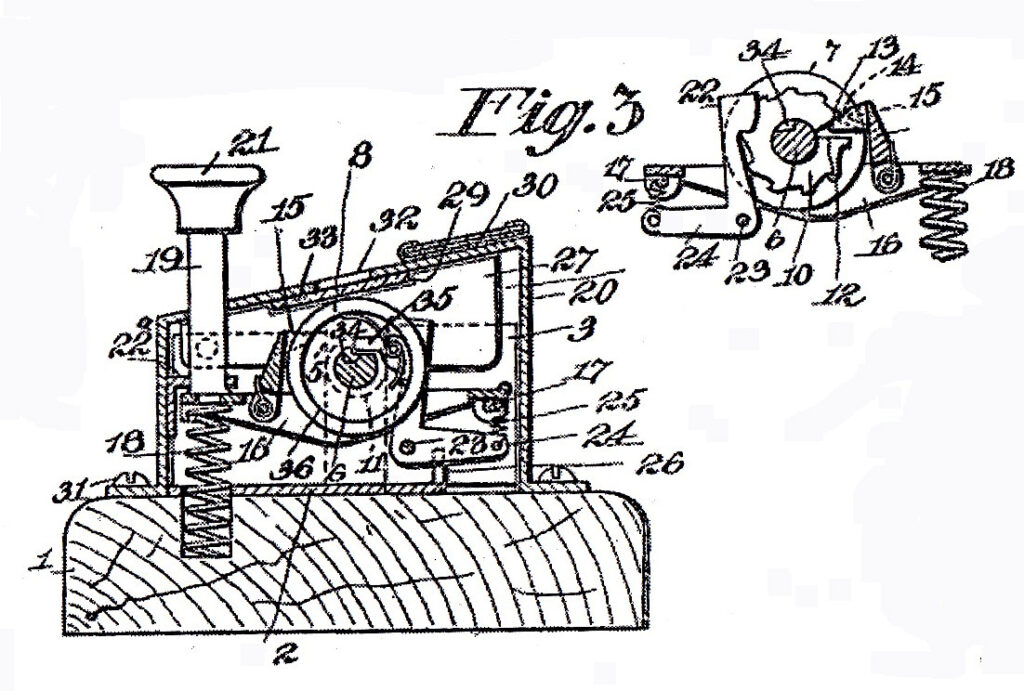
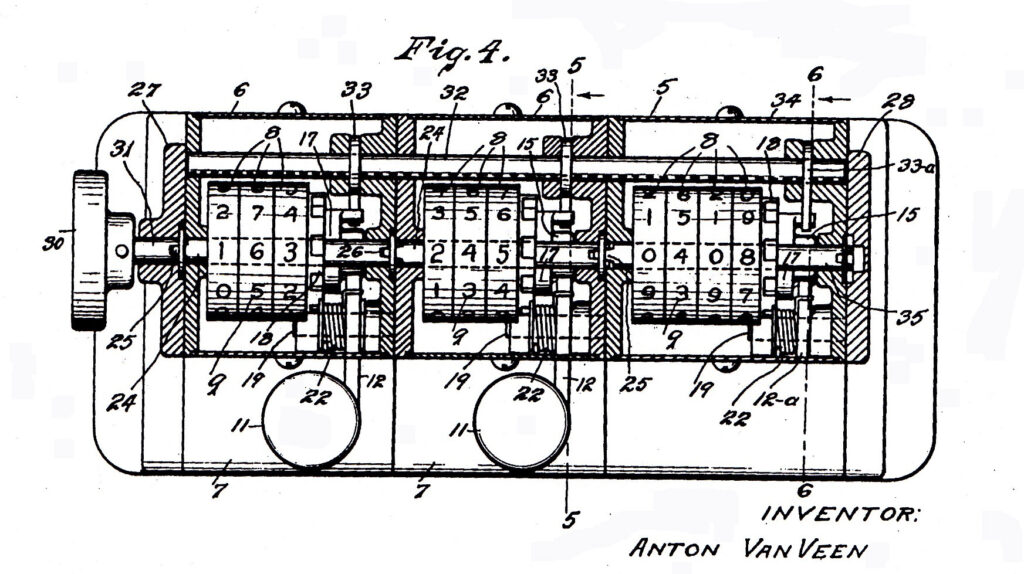
Mechanical tabulation
At the time, ahead of payday, a company had to have the correct amount of cash in stock for each individual wage earners’ pay packets. So the exact number of coins and banknotes had to be determined ahead of time and requested from the bank in advance.
The Denominator made preparing for payday easier. It was technically a very simple machine. The paymaster still had to do most of the brainwork: While they determined the total amount of coins and notes for each employee without a device — by using, for example, tally sheets — the Denominator would determine the total amount of currency parts required for the entire payroll.
The paymaster would take the list of payments to be made and key in each pay amount. The optimal breakdown of a monetary amount, i.e., with the smallest number of coins and notes, was a mentally challenging task. For example, if the wage was $39.78, this value had to be broken down into the following parts: $20 + $10 + $5 + $1 x4 + 50¢ + 10¢ x2 + 5¢ + 3¢ (the currency denominations available in the U.S. in 1930 included 1-, 3-, 5-, 10-, 25- and 50-cent coins and $1, $2, $5, $10 and $20 bills).
This breakdown had to be done by the paymaster before they could use the Denominator. Then the corresponding key on the machine had to be pressed the given number of times, with different values for each person on the wage list. At the end of payroll, the advantage of the device became apparent when the paymaster could see how many coins and notes of each type they need to keep in stock in order to pay out all wages in cash, and they can request these from the bank.
The Denominator consists of a set of 11 counters, each with a separate operating key. Six keys are for values of cents (50¢, 25¢, 10¢, 5¢, 3¢, 1¢), and five for dollar values ($1, $2, $5, $10, $20). Behind each key are three wheels; the value shown by the wheels increases by one each time the key is pressed.
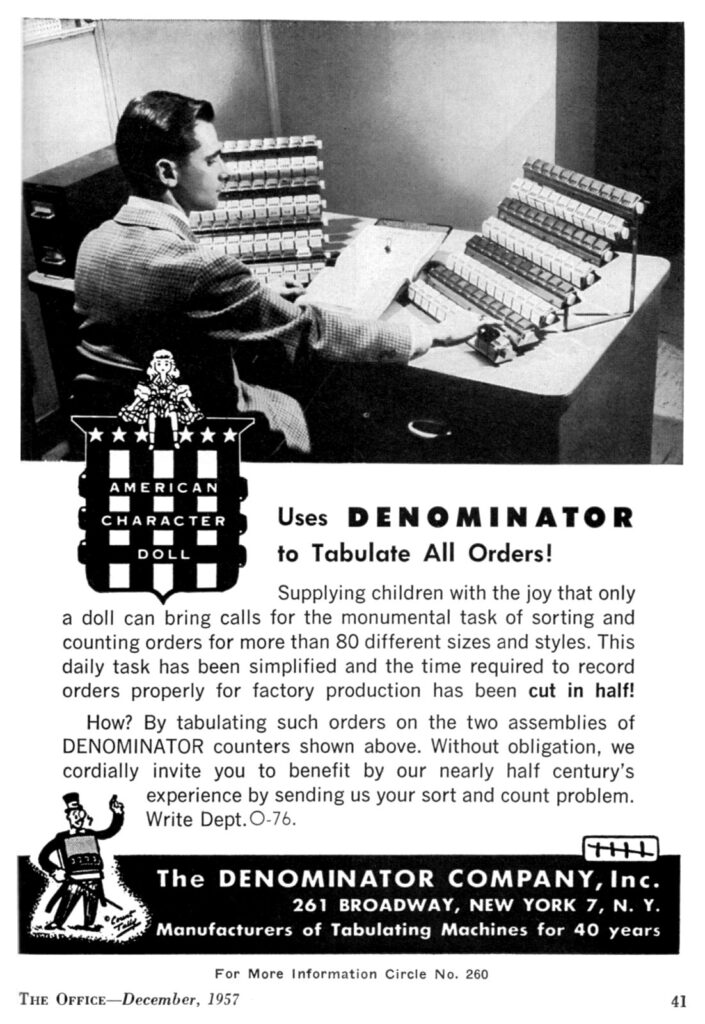
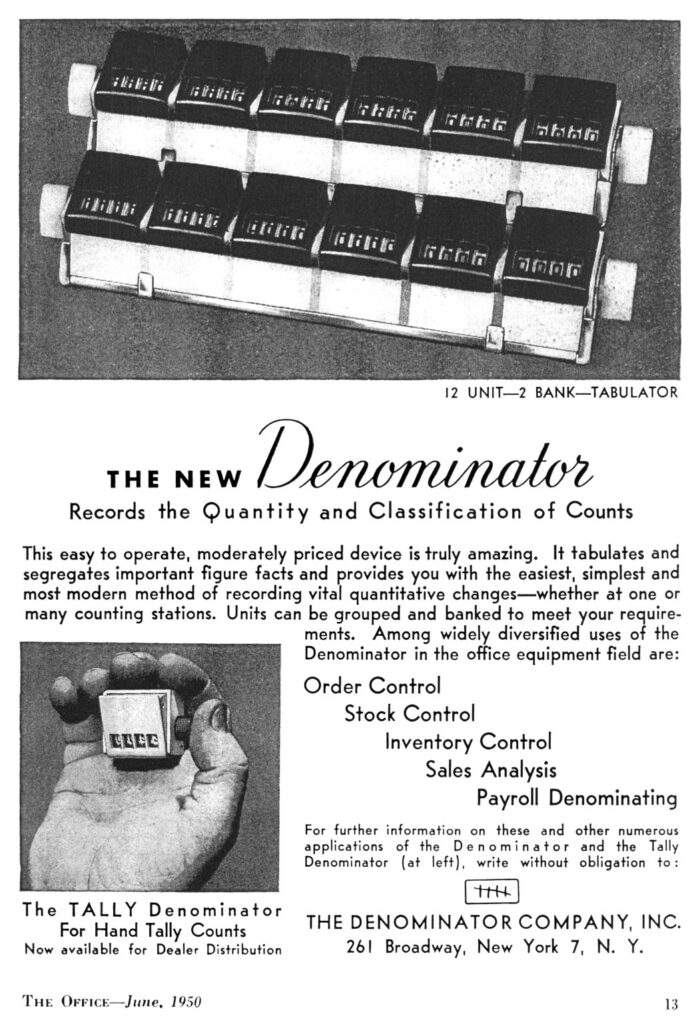
Advertisements in “The Office” June 1950 (left) and December 1957 (right). Source: https://www.rechnerlexikon.de/wiki.php
Multiple applications
The Denominator Company was founded as a family business in 1914 and is still active today, producing counting devices for various applications, including counting blood particles via microscope, observing migrant bird species or measuring the road load of motor vehicles.
Two ads from the 1950s extolled the multiple benefits of the Denominator:
There were also other makers of denominator machines, such as the Clay-Adams Company Inc., a manufacturer and importer of laboratory, surgical and medical supplies that manufactured a denominator in the 1950s and ’60s.
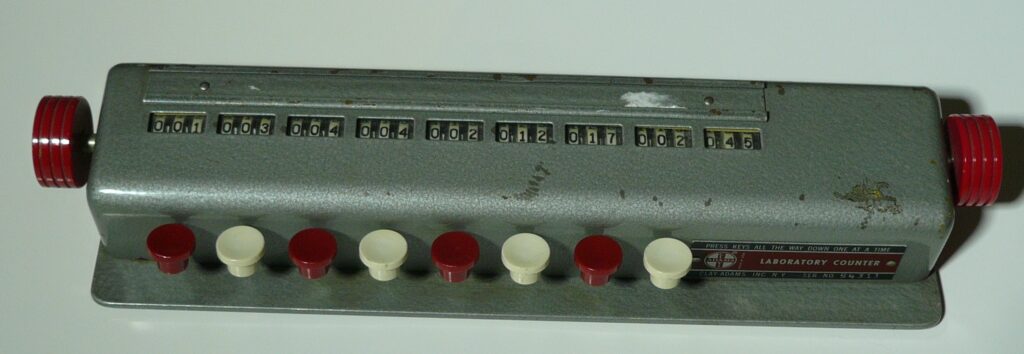
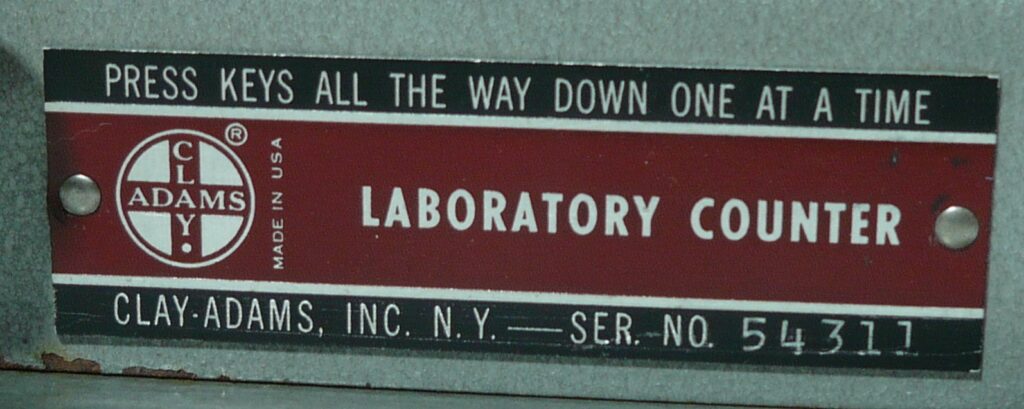
Photos: Erhard Anthes
Denominator devices became unnecessary after the cash payment of wages was replaced by bank transfers later in the 20th century. However, physical examples of early denominators can still be found in the National Museum of American History, in Washington, D.C., and in the Arithmeum in Bonn, Germany.
Read more
Sign up to keep up to date with ReThink Q.
